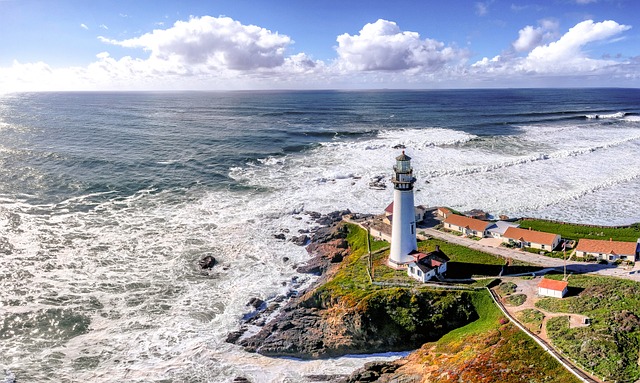Understanding the water damage repair process is crucial for anyone considering buying fire-damaged properties in California. This involves assessing damage, removing affected materials, cleaning and disinfecting, and repairing/replacing structural elements, with costs varying from a few hundred to tens of thousands of dollars. Financial assistance through insurance, federal/state aid, grants, or low-interest loans can help ease the financial burden. Prompt action is vital; initial steps include identifying the water source, shutting off supply, and removing standing water. Engaging professional restoration services for severe cases ensures comprehensive water removal, structural drying, mold remediation, and future damage prevention advice.
Water damage repair is a critical aspect of home purchasing, especially in California. This article guides you through the intricate process, from understanding water damage in homes to navigating restoration responsibilities and costs. Learn about effective strategies for prevention, as well as who’s responsible for restoring fire-damaged properties when buying a California home. By the end, buyers will be equipped with knowledge to make informed decisions in this essential aspect of real estate.
- Understanding Water Damage Repair Process in California Home Purchases
- Who Is Responsible for Fire-Damaged Property Restoration?
- The Cost of Water Damage Restoration: What Buyers Should Know
- Effective Strategies for Mitigating Water Damage in California Homes
Understanding Water Damage Repair Process in California Home Purchases

When purchasing a home in California, understanding the water damage repair process is crucial, especially for those who buy fire-damaged properties. Water damage is a common issue in homes across the state due to its frequent droughts and heavy rainfall during specific seasons. Fire-damaged homes in particular may have existing water damage or face increased risk of it after a fire, as water is often used to extinguish flames.
Homebuyers who consider purchasing these properties should be aware that water damage repair involves multiple steps. This includes assessing the extent of the damage, removing affected materials like drywall and insulation, cleaning and disinfecting the area, and then repairing or replacing structural elements. In California, where real estate markets can be competitive, buyers who are well-informed about this process may find they have a better understanding of potential costs and timelines, enabling them to make more confident decisions when purchasing fire-damaged homes.
Who Is Responsible for Fire-Damaged Property Restoration?

When a home in California suffers from fire damage, it raises the question: Who is responsible for repairing and restoring the property? In many cases, homeowners are initially responsible for organizing and paying for the restoration process. This includes assessing the extent of the damage, hiring professionals like firefighters, structural engineers, and restoration specialists, and obtaining necessary permits. However, when it comes to financial assistance, various options exist for California residents who buy fire-damaged homes.
Many insurance policies cover fire damage repairs, and homeowners can file claims with their insurers to offset the costs. Additionally, federal and state programs offer aid for disaster victims, providing grants or low-interest loans specifically designed to help with home restoration after a fire. These resources can significantly alleviate the financial burden on those who buy fire-damaged homes in California, ensuring that they can restore their properties safely and effectively.
The Cost of Water Damage Restoration: What Buyers Should Know

Water damage restoration can be a significant expense for homeowners, especially those in California who frequently face issues like pipe bursts or severe weather-related events. The cost of repairing water damage varies widely depending on several factors, including the extent of the damage, location within the home, and the type of materials affected. For buyers considering purchasing fire-damaged homes in California, understanding these costs is essential.
In California, the average cost to repair water damage ranges from $5,000 to $20,000 or more for a typical residential property. Smaller incidents might only require a few hundred dollars for minor repairs, while larger disasters could lead to bills reaching tens of thousands. Buyers should be aware that insurance coverage varies, and what is covered under one policy may differ from another. It’s crucial to review policies carefully, understand deductibles, and consider potential out-of-pocket expenses when assessing the financial implications of purchasing a fire-damaged home in California.
Effective Strategies for Mitigating Water Damage in California Homes

Water damage is a significant concern for homeowners in California, given the frequent extreme weather events. Prompt action is crucial to mitigate losses and prevent further damage. Homeowners should start by identifying the source of water intrusion and quickly turning off the main water supply to stop the flow. Then, they must remove any standing water using pumps or mops, and dry out the affected areas thoroughly with fans and dehumidifiers.
For severe cases, especially involving fire-damaged homes sought by who buys fire damaged homes California, professional restoration services are essential. These experts have the specialized equipment and knowledge to handle complex water removal, structural drying, and mold remediation. They also provide valuable advice on preventing future water damage through better drainage systems, sealing leaks, and installing waterproof barriers in vulnerable areas.
When purchasing a home in California, understanding the water damage repair process and potential costs is crucial, especially regarding fire-damaged properties. As a buyer, knowing your responsibilities and the various strategies to mitigate water damage can ensure a smoother transaction. Whether you’re considering buying a fire-damaged home or aiming to prevent such issues, these insights empower folks in California to navigate this aspect of real estate with confidence, ensuring their investment is protected.






